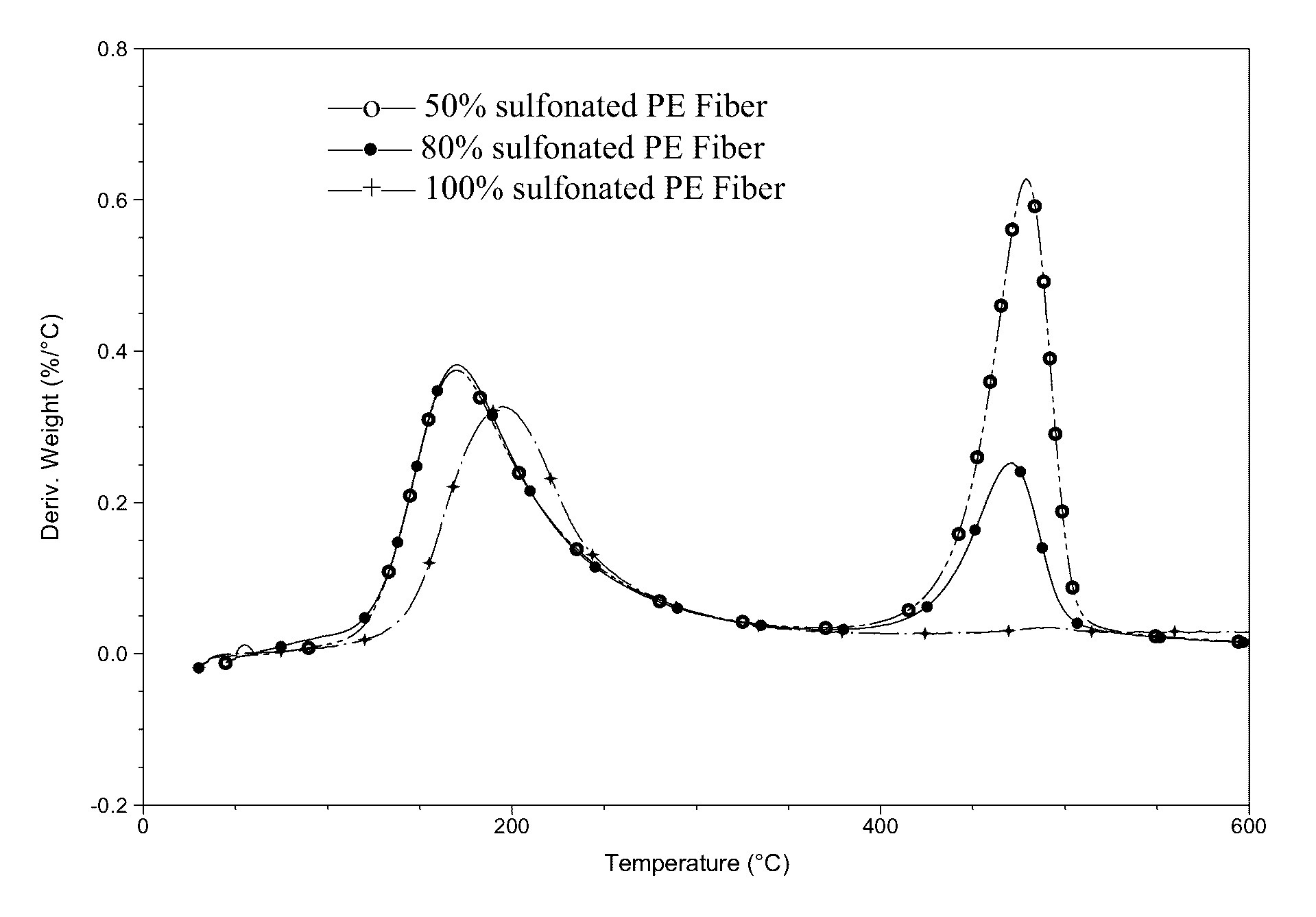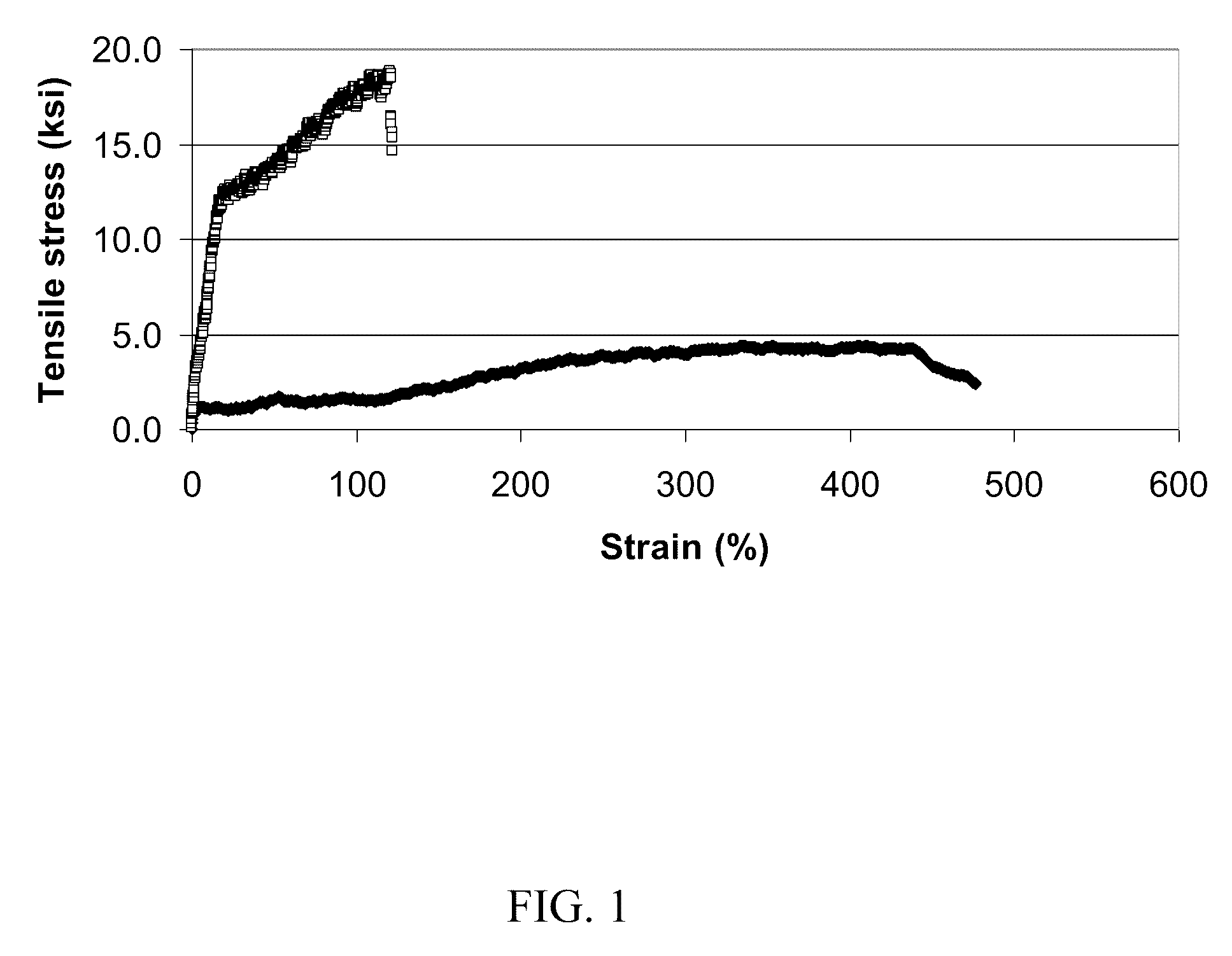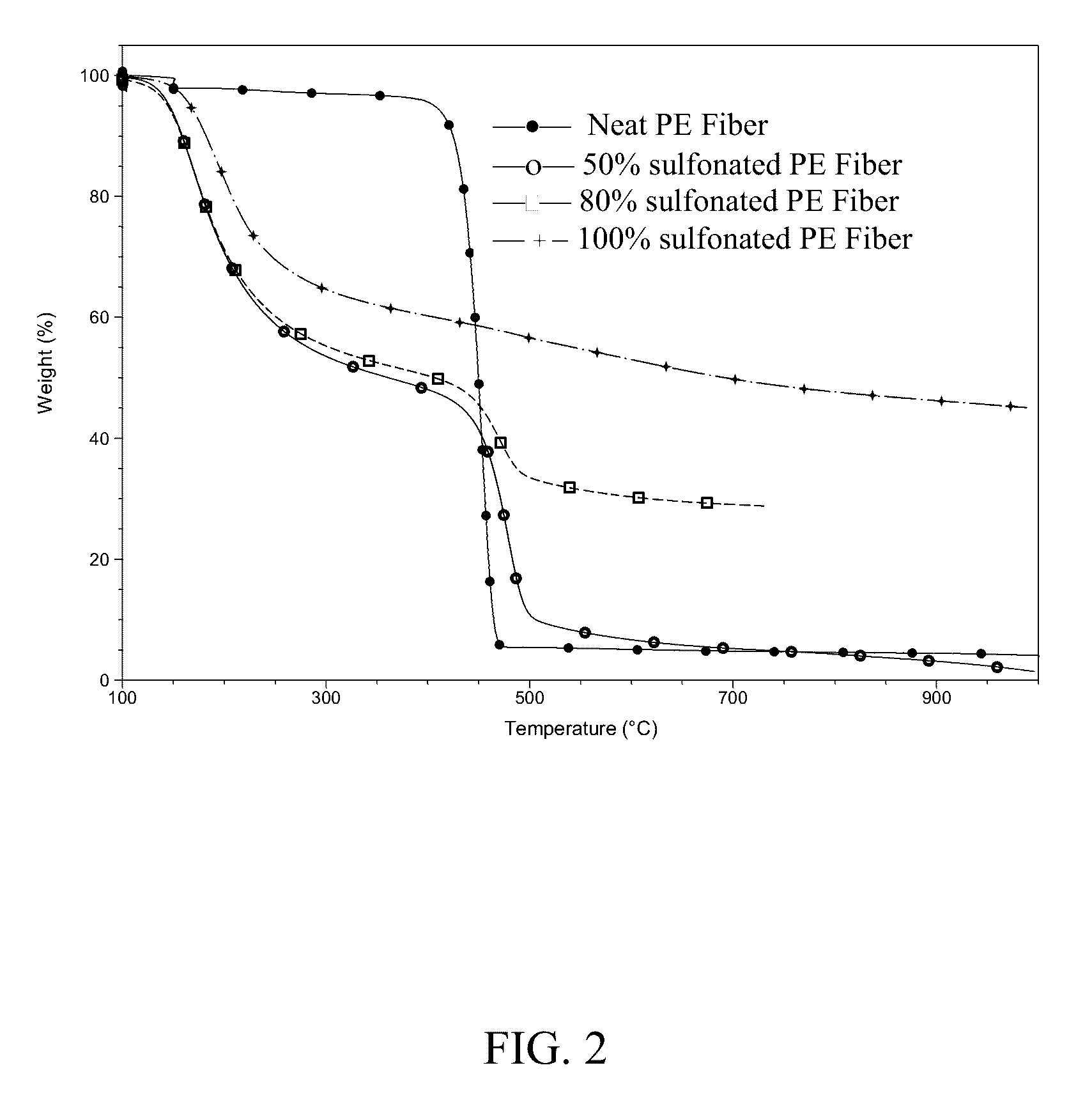Controlled chemical stabilization of polyvinyl precursor fiber, and high strength carbon fiber produced therefrom
a polyvinyl precursor and chemical stabilization technology, which is applied in the chemical characteristics of fibres, textiles and papermaking, etc., can solve the problems of pre-carbonized fiber formation and inability to retain significant concentrations of thermally labile groups covalently bonded to precursor macromolecules, and achieve the effect of dimensional stability
- Summary
- Abstract
- Description
- Claims
- Application Information
AI Technical Summary
Benefits of technology
Problems solved by technology
Method used
Image
Examples
examples
Preparation of Linear Low Density Polyethylene (LLDPE) Fibers
[0099]LLDPE fibers were spun from neat resin using a conventional melt extrusion method. Melt-spinning of the resin at 220° C. through a 288-hole spinneret gave a spun-drawn tow of filaments with 18-micrometer diameters (Sample 1). To get smaller diameter filaments of LLDPE, a bicomponent spinning process was used. A sheath-core filament with LLDPE core and polylactic acid (PLA) sheath was spun. The spinneret head assembly was maintained at 230° C., the PLA extruder was maintained at 200-230° C., and the LLDPE extruder was run at 190-220° C.
[0100]The PLA sheath was washed in a THF bath at 50° C. with a 30 minute residence time. After washing of the sheath component, LLDPE fibers (288 filaments) of 10 micrometer diameters were obtained. The fiber was not drawn to an appreciable extent primarily because of the inability to impart significant axial stress onto the molten LLDPE core. The sheath component solidified quickly and...
PUM
| Property | Measurement | Unit |
|---|---|---|
| boiling point | aaaaa | aaaaa |
| temperature | aaaaa | aaaaa |
| temperature | aaaaa | aaaaa |
Abstract
Description
Claims
Application Information
 Login to View More
Login to View More - R&D
- Intellectual Property
- Life Sciences
- Materials
- Tech Scout
- Unparalleled Data Quality
- Higher Quality Content
- 60% Fewer Hallucinations
Browse by: Latest US Patents, China's latest patents, Technical Efficacy Thesaurus, Application Domain, Technology Topic, Popular Technical Reports.
© 2025 PatSnap. All rights reserved.Legal|Privacy policy|Modern Slavery Act Transparency Statement|Sitemap|About US| Contact US: help@patsnap.com



